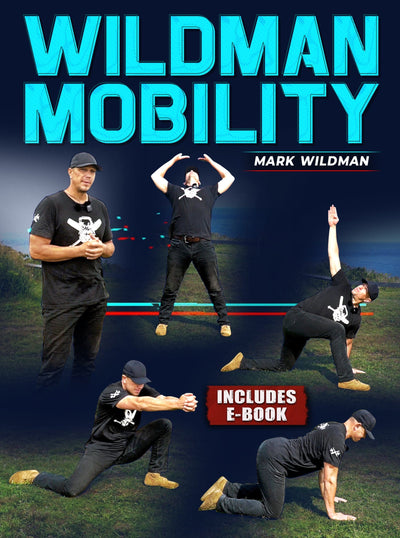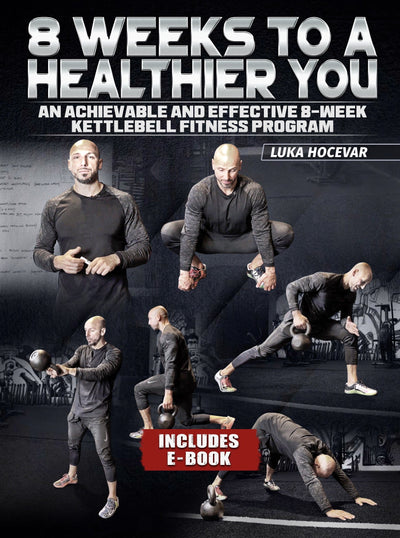Kettlebell Weight for Beginners
Kettlebells, with their distinct shape and versatility, have become a focal point in modern fitness routines. Whether you're a newcomer to the world of strength training or a seasoned athlete, incorporating kettlebell exercises into your regimen can bring a multitude of benefits. However, determining the right kettlebell weight is crucial, especially for beginners. This guide aims to provide a comprehensive understanding of kettlebell weights for those embarking on their fitness journey. From exploring the historical roots of kettlebell training to presenting beginner-friendly exercises and discussing the advantages, we aim to empower you to make informed choices and set a solid foundation for your kettlebell workout routine.
What this article covers:
- History of Kettlebell Workouts
- Understanding Kettlebell Weights for Beginners
- Beginner-Friendly Kettlebell Exercises
- Benefits of Kettlebell Training
- Progression and Safety Tips
History of Kettlebell Workouts
The history of kettlebells can be traced back to 18th-century Russia. Initially utilized as counterweights in markets, kettlebells gained popularity for their benefits in enhancing strength and conditioning. Over the years, they became an integral part of strength training and competitive sports. Russian strongmen and military personnel extensively used kettlebells, eventually leading to the development of specific kettlebell exercises and techniques. Kettlebell training gradually spread worldwide, evolving into the well-known fitness tool we use today.
Understanding Kettlebell Weights for Beginners
So how do you properly select kettlebell weight for beginners? When venturing into kettlebell training, selecting the appropriate weight is pivotal. Too light, and you won't challenge your muscles; too heavy, and you risk injury. For beginners, a general rule of thumb is to start with a lighter weight to master the movements and focus on form. Women often begin with kettlebells weighing between 8 to 18 pounds (4-8 kilograms), while men usually start with 18 to 26 pounds (8-12 kilograms). However, the right weight ultimately depends on your individual strength, fitness level, and exercise goals.
If you are looking for suggested kettlebell weight for beginners, kettlebell workouts for female beginners, advanced kettlebell workouts, 3 day a week kettlebell workouts, or intermediate kettlebell workouts we have you covered!

Beginner-Friendly Kettlebell Exercises
Kettlebell Goblet Squats
Hold a kettlebell close to your chest, squat down by pushing your hips back, and return to a standing position. Ensure your knees align with your toes throughout the movement. This exercise targets the lower body muscles, particularly the quadriceps, hamstrings, and glutes.
Kettlebell Swings
Begin with a hip-width stance, hinge at your hips, and swing the kettlebell between your legs. Swing it up to chest height, engaging your glutes and core. This movement primarily works the posterior chain, including the glutes, hamstrings, and lower back.
Kettlebell Deadlifts
Start with the kettlebell on the ground between your feet. Hinge at the hips while maintaining a flat back, and grab the handle. Stand up by extending your hips and knees, keeping the kettlebell close to your body. Lower the kettlebell back to the ground with controlled movement. This exercise targets the posterior chain and improves hip hinge mechanics.
Turkish Get-Up
The Turkish Get-Up is a complex exercise involving a series of movements to transition from lying down to standing, all while holding a kettlebell. It enhances stability, mobility, and engages the entire body.
Kettlebell Russian Twists
Begin in a seated position, holding the kettlebell close to your chest. Lean back slightly and lift your feet off the ground if comfortable. Twist your torso to the right and touch the kettlebell to the floor beside your hip, then twist to the left and repeat the movement. This exercise targets the obliques and helps improve rotational core strength.
Kettlebell Shoulder Halo
Hold the kettlebell by the handle at chest height with both hands. Keeping your core engaged, smoothly circle the kettlebell around your head, passing it behind your head, and then back to the starting position in front of your chest. Alternate directions after each circle. The kettlebell shoulder halo is excellent for shoulder mobility and stability.

Benefits of Kettlebell Training
Full-Body Workout
Kettlebells engage multiple muscle groups simultaneously, providing a complete workout in less time. Exercises like swings, squats, and Turkish Get-Ups activate major muscle groups, leading to efficient training sessions.
Functional Strength
Kettlebell exercises mimic everyday movements, enhancing functional strength and improving daily activities. Whether it's picking up groceries or lifting a suitcase, the functional strength gained through kettlebell training is directly applicable to daily life.
Cardiovascular Fitness
Dynamic kettlebell movements raise the heart rate, delivering a cardiovascular workout alongside strength training. Movements like kettlebell swings elevate heart rate, making kettlebell training an excellent option for improving cardiovascular health.
Core Strength
The instability of kettlebells necessitates core engagement, leading to improved core strength and stability. Many kettlebell exercises, such as the Turkish Get-Up and Russian Twists, require strong core engagement throughout the movement.
Flexibility and Versatility
Kettlebells can be used for a myriad of exercises, allowing for a versatile workout routine adaptable to varying fitness goals. From strength training to HIIT workouts, kettlebells can be incorporated into various routines, providing flexibility in your fitness regimen.
Progression and Safety Tips
As you grow stronger, gradually increase the kettlebell weight to maintain progress. Focus on proper form, controlled movements, and ample rest between workouts. Warm-up adequately before starting your routine and consult a fitness professional to ensure correct technique and safe progression. Additionally, ensure you have enough space around you while performing kettlebell exercises to avoid any accidents or injuries.
Kettlebell training offers an exciting avenue for beginners to improve strength, endurance, and overall fitness. Understanding the history, selecting the right kettlebell weight, and mastering beginner-friendly exercises are essential steps. The benefits are substantial, making kettlebells a valuable addition to your fitness journey. Stay consistent, prioritize safety, and enjoy the transformative power of kettlebell workouts on your path to a healthier and fitter you.
Did you find the blog helpful? If so, consider checking out other guides:
- Kettlebells Workout for Beginners
- 12 Week Kettlebell Workout Program
- Full Body Kettlebell Workout Program
- Kettlebell and Barbell Program
- 6-Week Kettlebell Workout Program
- Kettlebell Core Workout
- Upper Body Kettlebell Workout
- Around the World Kettlebell
- Kettlebell Marches for Core
- 35 lb Kettlebell Workout
- 5 lb Kettlebell Workout
- 25 lb Kettlebell Workout
- 100 Kettlebell Swings a Day
- Kettlebell Swings with a Dumbbell
- 10,000 Kettlebell Swing Challenge




